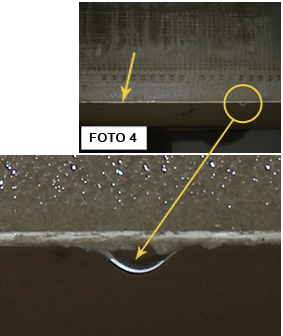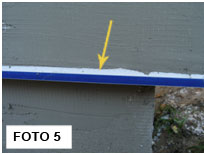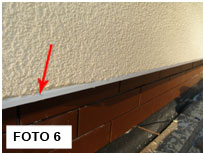The installation should begin by covering the surface of the thermal cladding with adhesive (PHOTO 1).
Then, sink the fibreglass mesh, which is a part of the dripnose bead, into the „wet” adhesive in such a way, so that the adhesive „passes” through the mesh to the outside (PHOTO 2). The mesh which is a part of the dripnose bead, embedded in this way, should be covered with the façade system’s mesh and the adhesive should be spread onto both meshes (PHOTO 3).
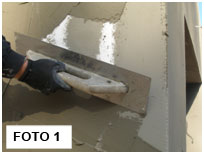
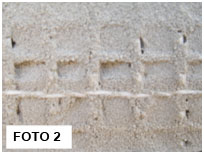

Depending on the type of dripnose bead (e.g. LUX, ECO), the adhesive should be spread in the appropriate manner.
For the BP14 LUX dripnose bead – flush-mounted – spread the adhesive to the bottom edge of the bead (FOTO 4).
For the BP14 ECO dripnose bead – spread the adhesive so that on average a few millimetres of unplastered white bead remains (PHOTO 5).
Such a way of covering both beads with adhesive will cause that, in the case of the BP14 LUX dripnose bead, textured plaster will be spread flush with the lower edge of the bead, which in turn will cause that the dripnose bead will not be visible. On the other hand, the BP14 ECO dripnose bead should be plastered flush with the blue protective film. Films must be removed immediately after plastering. The film removed ensures that a clean (free of adhesive and dirt) edge of the dripnose bead will be visible (PHOTO 6). The visible edge of the BP14 ECO dripnose bead can be left without paint or can be painted in any color, preferably in the RAL color of the plaster.
